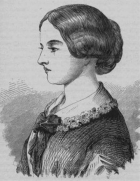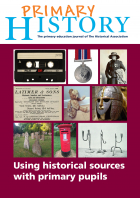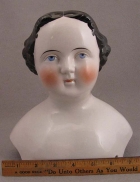Using Sources
It is important to use a wide range of sources such as pictures, artefacts, music and sights. Children will use these to build up their enquiry thought and processes and to build up their understanding of past.
Sort by:
Date (Newest first) | Title A-Z
Show:
All |
Articles |
Podcasts |
Multipage Articles
-

Learning history through the lens of artefacts
ArticleClick to view -

Learning to engage with documents through role play
ArticleClick to view -

Learning what a place does and what we do for it
ArticleClick to view -

Local History and the 2012 Olympics
ArticleClick to view -

Local railway history: using visual resources
ArticleClick to view -

Making the children work for the information!
ArticleClick to view -

Museums, schools and creativity: How learning can be enhanced
ArticleClick to view -

OFSTED, primary history and creativity
ArticleClick to view -

Oral history - a source of evidence for the primary classroom
ArticleClick to view -

Place-names and the National Curriculum for History
ArticleClick to view -

Poetic writing
ArticleClick to view -

Popular history: Using the media
ArticleClick to view -

Pride in place: What does historical geographical and social understanding look like?
ArticleClick to view -

Primary History summer resource 2021: Using historical sources
ArticleClick to view -

Printed pictures with text: Using cartoons as historical evidence
ArticleClick to view -

Pull-out Posters: Primary History 75
ArticleClick to view -

Pupils as apprentice historians (3)
ArticleClick to view -

Questions you have always wanted to ask about... Accessing Archive Sources
ArticleClick to view -

Questions you have always wanted to ask about... History and written sources
ArticleClick to view -

Questions you have always wanted to ask about...Using historical maps in the primary classroom
ArticleClick to view

